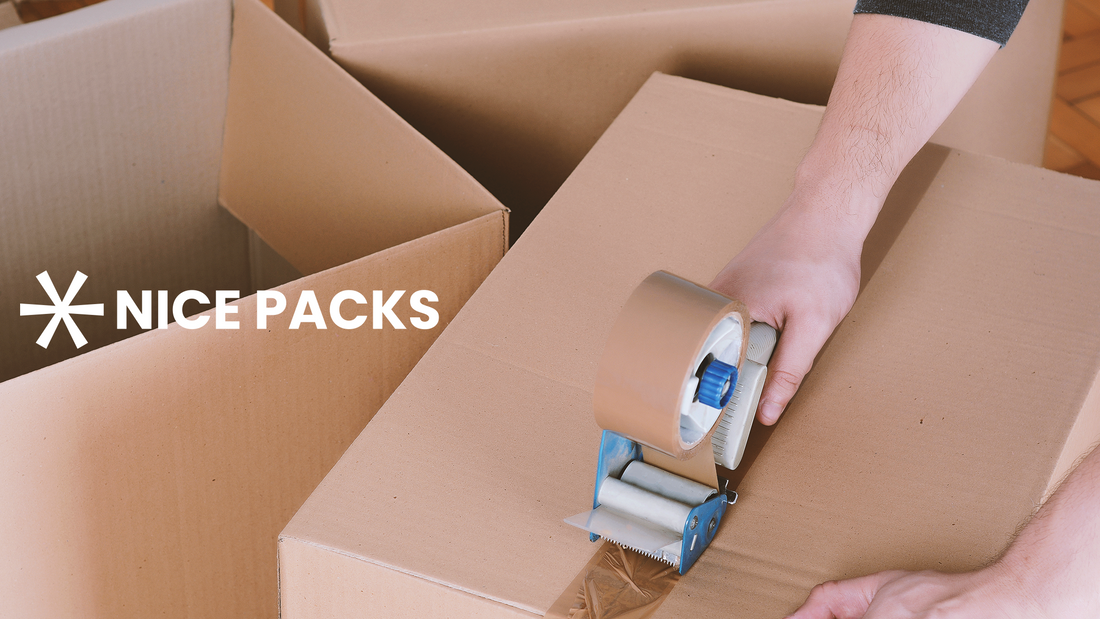In the business world, shipping is a crucial component of everyday operations. Whether you're dispatching an order for a customer or sending a sample to a potential client, you need to ensure the package arrives safely. A poorly packed box can result in damaged goods, disappointed customers, and potential loss of revenue.
In this blog post, we'll learn how to properly pack a box for shipping in a way that's both secure and efficient. Let's get started.
Packing Materials Required for Shipping
Credit: Envato Elements/ Andy_Dean_Photog
Before embarking on your packing journey, ensure you have all the necessary materials at hand:
- Sturdy Box: This will house your item and shield it from external elements. You can either use cardboard boxes or specially designed shipping packing boxes. The right box will depend on the item you're shipping, so choose wisely!
- Bubble Wrap or Packing Peanuts: These will cushion your item, offering vital protection during transit. It's good to have both on hand, as different items might require different types of cushioning.
- Packing Tape: This is not your ordinary office tape. Packing tape is strong and durable, designed to withstand the rigors of shipping. It will keep your box sealed and secure throughout the journey.
- Scissors: A sharp pair of scissors is essential for cutting tape and shaping your packing material to fit your needs.
- Shipping Label: A pre-printed shipping label will ensure accurate and efficient delivery of your box.
- Marker: A waterproof marker will ensure your labels stay readable, regardless of the weather.
- Ice Packs (for perishable items): If you're shipping items that need to stay cool, such as food or certain types of medication, shipping ice packs are crucial. These are different from your regular kitchen ice packs and are designed specifically to last longer and maintain a lower temperature over an extended period.
Step-by-Step Process to Packing a Box for Shipping
Now that you have everything ready, let's get to packing:
Step 1: Wrap Your Item
Credit: Envato Elements/ piyaphun
Begin by wrapping items securely in packing material. If your item is fragile, such as glass products, use bubble wrap to cover it. Ensure every part of the item is cushioned. Secure the bubble wrap in place by taping it securely. For non-fragile items like stuffed animals, you may not need bubble wrap but consider wrapping it in packing paper for added protection.
Step 2: Prepare the Box
Credit: Envato Elements/ stokkete
Next, you need to prepare the box for packing. Create a protective layer at the bottom of the box using your chosen filler (bubble wrap or packing peanuts). This step is crucial regardless of the shipping methods you select, as it will effectively safeguard your product against shocks and bumps during transit.
Step 3: Pack Your Item
Credit: Envato Elements/ s_kawee
Place your item in the box. Ensure it sits comfortably and does not move around. Now, fill the remaining space with more packing peanuts or crumpled paper. It should cushion the item from all sides, including the top. The goal is to minimize movement within the box during shipping.
Step 4: Add Ice Packs for Perishable Goods
Credit: Nice Packs
If you're shipping perishable goods, this step is crucial. Use specifically designed shipping ice packs - not the ones from your freezer.
Before adding the ice packs, wrap them in a plastic bag to protect the box from moisture damage. Place the ice packs around the product, ensuring a balance between cooling coverage and product protection. Remember, the goal is to keep the product cool and prevent it from moving around.
Step 5: Seal the Box
Credit: Envato Elements/ ijeab
Use your packing tape to seal the box securely. Cover all flaps and edges, ensuring a tight seal. A well-sealed box can withstand harsh handling and help keep cool air inside when shipping perishable items.
Step 6: Label the Box
Credit: Envato Elements/ zGel
Proper labeling is a vital part of the shipping process. Write your recipient's address clearly on the box, and don't forget to include your return address. If the box contains any type of hazardous material or fragile item, use a marker to clearly mark them on the box.
Finally, securely attach your pre-printed shipping labels. If you're using priority mail, having accurate shipping labels is especially important to ensure prompt handling of your shipment.
Step 7: Conduct a Final Check
Credit: Envato Elements/ wichayada69
Before your package leaves for its journey, do one last check. Gently shake the box to ensure everything is packed properly. Verify all address information, and make sure your labels are clear.
Summary
There you have it - a step-by-step process on how to pack a box for shipping. By mastering this process, you not only save money that would otherwise go to professional packing services, but you also take an active role in guaranteeing the safe and successful delivery of your product to your customer.
And speaking of successful deliveries, consider elevating your shipping experience with Nice Packs! Our dry ice packs and insulated shipping boxes are designed to maintain optimal temperature and provide maximum protection. Shop with us today.










